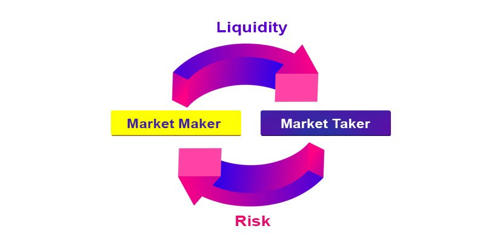Liquidity describes the extent to which an asset can be bought and sold quickly, and at stable prices. In business, economics, or investment, market liquidity is a market’s feature whereby an individual or firm can quickly purchase or sell an asset without causing a drastic change in the asset’s price. It refers to the extent to which a market, such as a country’s stock market or a city’s real estate market, allows assets to be bought and sold at stable, transparent prices. Liquidity is about how big the trade-off is between the speed of the sale and the price it can be sold for. In a liquid market, the trade-off is mild: selling quickly will not reduce the price much. The liquidity of markets for other assets, such as derivatives, contracts, currencies, or commodities, often depends on their size, and how many open exchanges exist for them to be traded on. In a relatively illiquid market, selling it quickly will require cutting its price significantly enough to generate interest. Usually, liquidity is calculated by taking the volume of trades or the volume of pending trades currently on the market.
Market liquidity impacts everything from the bid-offer spread to trade execution. Money, or cash, is the most liquid asset because it can be “sold” for goods and services instantly with no loss of value. There is no wait for a suitable buyer of the cash. There is no trade-off between speed and value. That’s why it’s important to have a firm understanding of what the term means, and which markets are liquid and illiquid. It can be used immediately to perform economic actions like buying, selling, or paying debt, meeting immediate wants and needs. This can attract speculators and investors to the market, which adds to the favorable market conditions.
Market liquidity is important for a number of reasons, but primarily because it impacts how quickly you can open and close positions. In an alternative definition, liquidity can mean the amount of cash and cash equivalents. If a business has moderate liquidity, it has a moderate amount of very liquid assets. If a business has sufficient liquidity, it has a sufficient amount of very liquid assets and the ability to meet its payment obligations. High liquidity means that there are a large number of orders to buy and sell in the underlying market.
In a liquid market, a seller will quickly find a buyer without having to cut the price of the asset to make it attractive. An act of exchanging a less liquid asset for a more liquid asset is called liquidation. Often liquidation is trading the less liquid asset for cash, also known as selling it. An asset’s liquidity can change. For the same asset, its liquidity can change through time or between different markets, such as in different countries. And conversely, a buyer won’t have to pay an increased amount to secure the asset they want. The change in the asset’s liquidity is just based on the market liquidity for the asset at a particular time or in a particular country, etc. The liquidity of a product can be measured as to how often it is bought and sold. Liquidity can be enhanced through share buy-backs or repurchases. If there is volatility on the market, but there are fewer buyers than sellers, it can be more difficult to close your position.
















